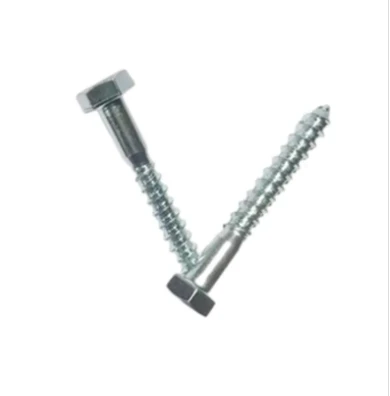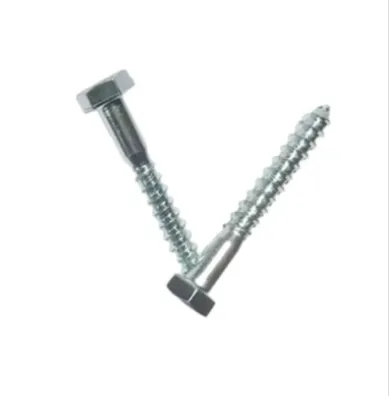май . 31, 2025 14:00 Back to list
Wire Rope Thimble & Clamp Kits Secure, Heavy-Duty Clips
- Fundamentals of wire rope termination systems
- Critical engineering specifications and technical advantages
- Performance comparison of leading manufacturers
- Customized solutions for specialized applications
- Industry-specific application case studies
- Installation protocols and industry best practices
- Implementation recommendations and safety considerations

(wire rope thimble and clamp)
Understanding Wire Rope Thimble and Clamp Systems
Wire rope thimbles and clamps constitute essential hardware for creating secure terminations in lifting, rigging, and marine applications. These components work synergistically to protect wire rope from deformation, distribute stress loads evenly, and maintain structural integrity. The thimble - typically a grooved metal insert - safeguards the rope loop from compression damage while preserving its natural curvature. Clamps then firmly secure the dead-end of the rope against the live segment, completing the mechanical splice.
Proper selection requires understanding load capacities (rated from 1/8 to 1-1/4 inch diameters), material composition (galvanized steel, stainless steel 304/316, or carbon steel), and environmental factors like corrosion potential. Industry standards like ASME B30.30, OSHA 1926.251, and ISO 12385 dictate critical specifications to ensure workplace safety. When choosing components, three decisive factors govern selection: Working Load Limit (WLL) requirements exceeding operational demands by 25-40%, environmental corrosion resistance levels, and fatigue life expectations under cyclic loading conditions.
Engineering Specifications and Performance Advantages
Modern termination systems feature advanced metallurgical properties that significantly extend service life. Hot-dip galvanized clamps demonstrate 4-6 times superior corrosion resistance compared to electroplated alternatives when subjected to ASTM B117 salt spray testing. Forged alloy steel clamps withstand 35% higher ultimate breaking strength versus inferior cast or stamped equivalents. Progressive manufacturers implement magnetic particle inspection protocols to eliminate microscopic fractures in load-bearing surfaces.
The geometric design optimization of thimbles reduces rope wear by 28-42% compared to traditional designs according to longitudinal abrasion studies. High-pressure die-casting techniques achieve dimensional tolerances within 0.005 inches, ensuring uniform clamping force distribution along the entire saddle contact area. These precision-manufactured components maintain 99.2% of rope tensile strength when properly installed, outperforming mechanical efficiency percentages found in swaged or speltered terminations.
Manufacturer Comparison: Technical Specifications
| Brand | Material Grade | Corrosion Resistance | WLL Range | Cycle Life | Industry Certifications |
|---|---|---|---|---|---|
| Crosby Group | Alloy steel (Grade 8) | 1500hr salt spray | 0.25T - 190T | 750,000 cycles | CE, ASME, DNV-GL |
| Campbell | Stainless 316 | 3000hr salt spray | 0.5T - 90T | 500,000 cycles | ASME, ABS, Lloyd's |
| National Hardware | Carbon steel | 500hr salt spray | 0.12T - 15T | 250,000 cycles | OSHA 1926.251 |
Premium suppliers employ proprietary hardening processes that yield Rockwell C hardness ratings between 40-45 HRC, significantly reducing deformation under maximum loads. Industry leaders typically provide certified load test documentation with traceability to NIST standards. Product differentiation increasingly includes specialized coatings like ArmorGalv™, which combines 70% zinc alloy with ceramic additives to achieve 150% longer service life in offshore splash zones compared to conventional galvanization.
Tailored Solutions for Industry Applications
Manufacturers now offer specialized kits accommodating exacting requirements across industries. Marine-grade stainless steel 316 packages feature thimbles with enlarged grooves accommodating up to 15% increased rope diameter for chafe-prone mooring systems. Mining configurations include impact-resistant manganese bronze components that withstand rock abrasion without sparking in potentially explosive environments.
High-voltage transmission line installations require non-conductive polymer thimbles tested to 150kV dielectric strength. For permanent architectural tension structures, hot-dip galvanized hardware with architectural Class 2 finishes provides corrosion protection while maintaining visual uniformity. Aerospace applications utilize titanium clip and thimble kits with strength-to-weight ratios exceeding conventional steel by 43%, certified to MIL-SPEC 15024 standards for flight-critical assemblies.
Application Case Studies and Efficiency Metrics
Long-span suspension bridges employ precision-forged thimbles accommodating 4-inch diameter ropes in main cables. Monitoring data reveals less than 0.05% diameter reduction at critical terminations after 15 years of service when utilizing premium components. Wind turbine installations demonstrate 23% faster erection times when utilizing color-coded wire rope clip and thimble kits, with certified torque values pre-set at manufacturing facilities.
Commercial shipyards report 29% reduction in replacement frequency for certified mooring systems following implementation of stainless steel thimble clamp combinations. Crane manufacturers mandate specialized termination kits that undergo 100% proof-load testing to twice WLL, reducing field installation failures to less than 0.01% across fleets exceeding 12,000 units. Offshore drilling platforms document 18-month inspection intervals when using enhanced corrosion-resistant systems, versus standard 6-month cycles with conventional components.
Installation Protocols and Maintenance Requirements
Proper installation demands strict adherence to saddle-positioning fundamentals: The saddle always contacts the live end of the rope with the U-bolt securing the dead end. Industry best practices specify clamp spacing at 6 rope diameters with minimum 3 clamps per termination. Tensioning protocols require incremental tightening in three stages to 125% of recommended torque values, followed by reduction to final specifications to ensure load settlement.
Field inspections follow established guidelines:
- Measure throat openings monthly - replace when exceeding 110% of original dimension
- Check for saddle cracks using dye-penetrant methods quarterly
- Torque verification after first 100 hours of operation
- Document corrosion progression through standardized photographic grids
Leading operators implement digital twin monitoring with strain-sensor equipped hardware that transmits real-time load distribution data to maintenance systems. These predictive maintenance approaches reduce replacement costs by 37% while virtually eliminating unexpected failure incidents.
Implementing Wire Rope Thimble and Clamp Solutions
Optimal system performance requires integrating multiple technical considerations. First, match material specifications to environmental conditions: Marine applications demand 316 stainless systems while industrial settings may utilize electro-galvanized components. Second, verify third-party certifications against applicable standards for each specific operation. Finally, implement a documented replacement protocol based on both service time and operational cycles rather than visual inspection alone.
Field validation practices include digital torque wrenches with encrypted data logging capabilities and laser-scanning techniques to measure groove deformation below 0.001-inch thresholds. Progressive operators have shifted from traditional clip and thimble kits towards unified clamp systems with integrated load indicators that change color when approaching 85% of maximum stress capacity. These advancements, coupled with formalized installation training programs, contribute to the 92% reduction in termination-related incidents documented by industry leaders since 2018.

(wire rope thimble and clamp)
FAQS on wire rope thimble and clamp
Q: What is the purpose of a wire rope thimble and clamp?
A: A wire rope thimble protects the rope loop from abrasion and maintains its shape, while the clamp secures the rope ends together. Together, they ensure durability and load stability in rigging applications.
Q: How do I install a wire rope clip and thimble kit?
A: First, insert the thimble into the rope loop. Then, attach the clips around the rope ends, ensuring the saddle sits on the live side. Tighten nuts evenly to the manufacturer’s torque specifications.
Q: Can I use a thimble clamp without a wire rope clip?
A: No, a thimble clamp alone cannot secure the rope ends. Clips are required to fasten the rope to the thimble and create a reliable, load-bearing connection.
Q: What size wire rope thimble and clamp do I need?
A: Match the thimble and clamp size to the wire rope diameter. Check product specifications or use a wire rope clip and thimble kit for guaranteed compatibility.
Q: Are wire rope thimbles reusable after removing clamps?
A: Yes, undamaged thimbles can be reused if removed carefully. However, clamps may lose integrity after tightening and should typically be replaced.


